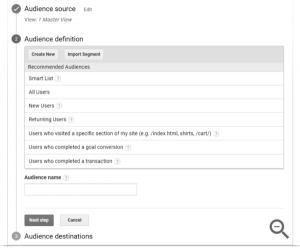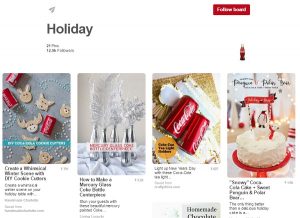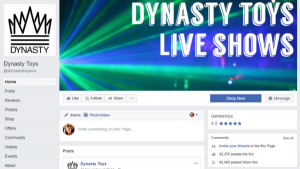It’s true that as of late, Amazon’s shiny reputation has taken some hits. Delayed processing of non-essential items, an alleged lack of protective gear for warehouse employees, and numerous late package shipments have made headlines. But even with the bad PR, the ecommerce giant has posted record sales since the start of the COVID-19 pandemic. And much of the products moving are being done by third party sellers. There has never been a better time to jump into the tank and see if you have what it takes. If you don’t have any experience selling on Amazon, this checklist is where you’ll want to begin.
1. Have Your Product and Supply Chain Nailed Down
Whether you’re starting with one product or fifty, finalize what they are and how you’re going to get them. Nailing your supply chain means not only who you’re going to source your products from, but how long they take to get to you, how many different suppliers you have, and what your backup options are.
2. Have a Logo Design Picked Out
Logos make your brand memorable and help you stand out from the crowd. Similar to your marketing funnel, think carefully about who your audience is and how they will react to your logo’s design. If you’re not the creative type, this is definitely the sort of task that is worth outsourcing to a freelance designer or agency. Whatever you decide to go with, once you have committed to a logo, don’t fuss about it too much. There are going to be other, more pressing needs that require your time. But at the beginning, you definitely should spend some time thinking about what your brand’s visual impact is.
3. Have FBA or SFP Enabled, Because the Money is in Prime
It’s not enough just to have products listed on Amazon. You need to earn that coveted Prime check mark. Amazon recently stated that sellers who newly become prime-eligible experience an increase of sales of over 50%. In order to be a Prime Seller, you have two options: 1) Fulfillment by Amazon (FBA) and store your inventory in Amazon warehouses or 2) Seller Fulfilled Prime (SFP) and store your inventory in third-party warehouses that meet Amazon’s strict evaluation criteria. In other words, you won’t be able to store your inventory at home or in a storage unit or your parents’ basement.
Does it cost a bit more money to go the FBA/SFP route? Yes, it absolutely does. Which brings me to the next point:
4. Have a Financial Runway (6 months minimum saved up)
As the saying goes, you have to have money to make money. Starting any type of shop is expensive and the costs add up, especially at the beginning. Make sure you have a decent runway to cover you while you build up a marketing engine and your sales begin to trickle in.
A rule of thumb for starting most businesses–and this is no different–is you want somewhere between 6-12 months’ reserve saved up.
5. Configure Your Marketing Funnel
No matter how cool or useful or well-designed your product might be, it won’t sell itself–at least not at the beginning. You need to think about how you’re going to bring it to people’s attention. Your target audience affects your strategy here. Instagram, for example, has an audience of largely Millennials, with 79% of people aged 18-49 being active on Instagram (and 75% of all women). If you’re selling a fashion-related product to Millennial women, you can get away with using Instagram and literally nothing else to get the word out. If you’re selling industrial kitchenware targeted at restaurant owners, it may be wise to set up a separate website with a blog that you can start building links to.
6. Have a PPC Campaign Strategy
It’s possible to build a successful Amazon business organically. But ads can serve their purpose, especially at the beginning as you research and test out different messaging to see what appeals most to customers. Amazon allows you to run ads, and it’s worth throwing a little bit out there and seeing what may work for you. The same goes for Google search and even certain social media networks–again, refer to your marketing funnel and decide which, if any, networks you want to spend the money and time on advertising.
8. Have an Accounting Software Like Quickbooks or Freshbooks Picked Out
Tracking your expenses and keeping a ledger is generally not very fun, but getting audited by the IRS is the absolute worst. You owe it to yourself to use software such as Freshbooks, Wave, or Quickbooks to track your balances. If you don’t have a separate business credit card yet for making purchases, get one, since that will make expense tracking even easier. You’ll thank yourself come tax season.
9. File a DBA or LLC
A DBA (doing business as) will allow you to do business under another name – presumably, the name of your business. A DBA is different than an LLC in that the business of someone who has filed for a DBA is not seen as separate, legally speaking, from the person. An LLC on the other hand is separate, and the person has less liability if the business fails.
10. Research Competitors and Pricing History
Knowing what your competition is up to is one of the first things they tell you in business school. If something is selling well for your competitor, you need to know about it. There’s a ton of different tools for spying on companies in your niche. Everything from their top-ranked blog posts to where they spend their PPC ad budgets to their product pricing history is easy to find if you use the right tool set.
11. Do Keyword Research
Keywords are the building blocks of selling on Amazon. If you get them right, you stand a chance; if you don’t, you’re probably going to fail. This relates a little bit to the last tip, but looking at the top-ranked products in your category is a good place to start your research. Whatever is working for them can work for you–to an extent. There is always room to optimize.
12. Nail Your Product Photography
Amazon isn’t craigslist! You can’t take a half-decent photo of your product with an iPhone and hope it sells (because it won’t). Invest in a high quality DSLR camera and a mini studio setup, or pay someone to take product shots for you. If you want to learn the ins and outs of good product photography, start now.
13. Write optimized product descriptions
Those five sentences that customers use to learn about your product can make or break you before the customer even lays eyes on them. You need to make sure that you include every keyword your customer might be searching for, as well as all the relevant details about the product.
14. Research Deal Options
From lightning deals to upselling to marketing campaigns, Amazon offers tons of ways for sellers to reel in customers by offering great deals. However, not all of them will be right for you, and it’s important to understand each one (and which one you’re going to target) before you get started. For example, if your priority is moving inventory quickly, lightning deals could be a great fit; on the other hand, if you offer similar versions of products at different price points, upselling could be better.
15. Decide How You’re Going to Handle Returns
Sooner or later, someone is going to be unhappy with the item they receive. How are you going to handle it? The options include giving a full refund and not requiring it to be returned, a customer favorite, for obvious reasons; giving a refund and accepting the return, but charging the customer to ship it back to you; and possibly the most hated, charging a restocking fee.
Get Started!
It’s never too late to start on a platform that continues to grow, you just want to make sure that you’re prepared. Complete this checklist and you’ll be well on your way to raking in those sweet Amazon bucks.
Digital & Social Articles on Business 2 Community
(33)






